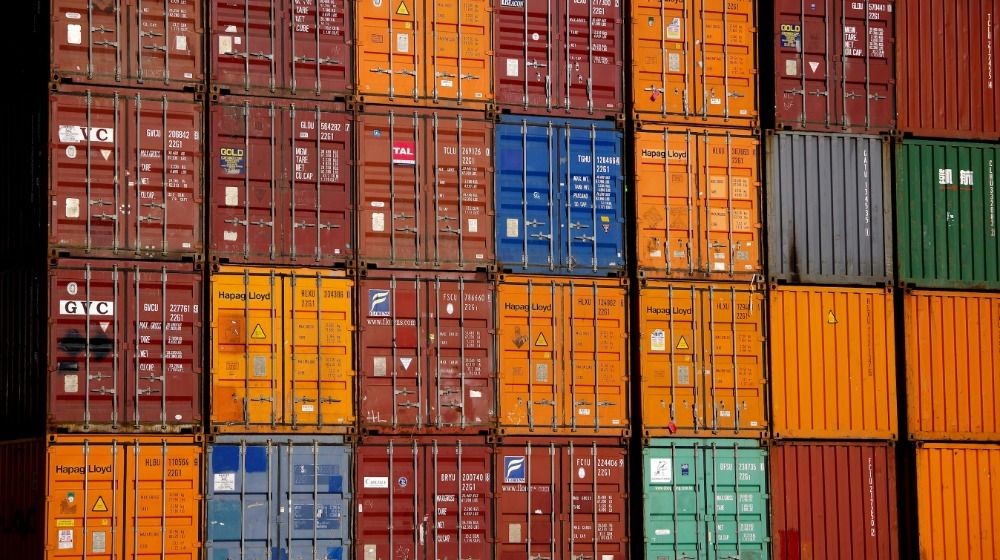Ask an Underwriter: I'm worried about US tariffs – how can I protect my margins?
A US-based apparel founder writes:
My eCommerce business is starting to take off, but I'm constantly worried about the impact of US tariffs. We import a significant portion of our raw materials from overseas, and the fluctuating US tariffs are making it incredibly difficult to forecast costs and manage our profit margins. I've heard rumors about potential new tariffs coming in later this year, and I'm scared of getting blindsided.
- What strategies can I implement to mitigate the impact of these unpredictable US tariffs?
- How do I keep my business afloat when the US trade policy feels so unpredictable?
- How does Wayflyer assess the risk of US tariffs when evaluating funding applications?
Gavin Whitaker, Credit Lead at Wayflyer, reviews financing applications from hundreds of businesses every month.
Here, he shares the inside track on US tariffs and the concrete actions you can take to stop them from impacting your profit margins.
But before you dive in… Want the latest insider insights like these, delivered straight to your inbox? Sign up for our brand new newsletter.
What should brands know about US tariffs?
As a sector dependent on supply chains and products from around the world, the introduction of US tariffs will impact every eCommerce business.
In fact, 77% of small business owners in the US are worried about the impact of tariffs on the US economy, according to business advocacy organization Small Business Majority. Here's what every operator should know:
1. They’re still evolving
Although it’s something we are discussing on every customer call at the minute, unfortunately, US tariffs are still very much a moving target. For example, we still don't know what sort of retaliatory tariffs will be implemented by countries after Trump’s announcement this week.
It’s constantly changing pace, and nobody can truly predict what will happen. There is massive uncertainty here. As we don’t know what the next tariff will be, this is not advice, but rather where we would suggest you focus first.
2. They’ll impact low-margin products
The main point when it comes to US tariffs is that it’s all about gross margins – if they’re strong, it won’t be a big issue. But if they’re a low margin product sourcing from abroad, this could be a material concern.
3. They apply to your entire supply chain
When I talk to customers, I always think it’s worth reminding them that US tariffs apply to every step of your supply chain - not just where your suppliers are located, but beyond that into where raw materials are sourced from. Because of this, these US tariffs will inevitably drive up costs.
4. You need to do the calculations
Once you’ve figured this out, try to predict the mathematical impact on gross margin. This will enable you to decide on the best solution for your business. Drastic steps may or may not need to be taken to reduce the impact.
What can brands do to minimize the impact of US tariffs?
1. Move manufacturing or supply chains to the US
This is the obvious solution, and ultimately the goal of these tariffs. This is the case for both US businesses importing their products, and international companies exporting to the US. For instance, some EU and UK companies exporting products to the US are looking for US co-packers to circumvent the tariffs.
This will be costly and time consuming. Finding appropriate new suppliers or manufacturers often takes a few months and significant manpower.
Additionally, your production costs will be higher, so calculations must be done to ensure that the saving on the tariffs outweighs these additional costs. As long as a decent gross margin can be maintained in this move, it will future-proof your business against future trade uncertainty.
Ask yourself: Can I absorb reduced profits long-term and support my existing fixed costs base?
Which products would be most suitable to reshore to the US?
This is industry- and maybe even company-specific. I would suggest a good starting point would be to try to figure out:
- What is available to easily switch?
- What industries would there be co-packers/manufacturers for in the US?
- Would you still need to source materials from tariff-hit countries?
In general, food and beverage brands would be easier to reshore, given that they usually have short lead times and product life cycles. There is also a large co-manufacturing industry in the US for drinks companies already.
How will reshoring impact a brand's gross profit margin?
As we saw in our financial benchmarking report last year, gross margin changes dramatically per industry. For example, Bloomberg reports that reshoring car production from Mexico and Canada to the US is likely to add a $3,500 cost to each vehicle.
Similarly, Vogue Business calls domestic production of beauty products “a double-edged sword”. Only 7% of beauty and personal care products sold in the US are produced there, and they tend to come with a 5.5 per cent premium. Inevitably, this will challenge brands hoping to balance affordability and price increases.
2. Negotiate with your suppliers
Something we see all the time is that with larger companies, it’s often a mutually beneficial relationship, so it will be in the supplier’s interest to come to the table and negotiate.
Attempting to ensure a decent gross margin is maintained could be the route of least resistance, to minimize the impact of US tariffs on your business.
Ask yourself: Would my suppliers agree to this type of deal?
Have many brands been successful in these negotiations so far?
Right now, that’s tough to answer, as it’s a problem that customers are solving as we speak, rather than something they have solved.
Customers have spoken about negotiating price reductions with suppliers and taking advantage of early payment or bulk discounts where possible to mitigate the negative impact of the tariffs on gross margin.
This is definitely a temporary solution. Whether any major longer-term price reduction or negotiations happen is a different story. It will probably depend on the company’s power over their suppliers.
Large companies with small suppliers will have much more control and therefore negotiating power.
3. Pass these costs onto customers
This is why tariffs and inflation are so closely linked. This is a risky strategy in a highly competitive market, as competitors may not increase their prices, therefore your market share may be reduced.
However, if your customers are not price-sensitive, this could be a smart strategy, as it is easy and quick to deploy.
Alternatively, a combination of the above two points could also be effective. They would enable you to make incremental moves in two key contributors of gross margin.
Ask yourself: Would customers be willing to pay an X% higher price?
4. Move suppliers to a country less affected by US tariffs
Your final option would be to move suppliers to a country less affected by the tariffs. I do remind customers that this has its own risks, as we don’t know how long Trump’s list of countries may grow, so there’s no guarantee that any country's current tariffs will not increase.
While this approach can reduce reliance on certain markets that have higher tariffs, it may lead to initial costs due to moving, such as new tooling, new payment terms, as well as increased production costs or lower quality production.
Ask yourself: Can I absorb the cost of moving production and can I be certain about further tariffs against other countries?
Are Wayflyer customers choosing to move supplier location?
Some of our customers are engaged in or planning moving production from China to Cambodia and Vietnam. However, both countries now see tariffs of 49% and 46% respectively, which brings them closer in line with China. China now has a 54% tariff, with an additional 34% tariff added on top of the 20% already imposed.
What are other consumer brands doing about US tariffs?
In discussions with over 30 of our customers, five primary strategies to tackle the impacts of US tariffs have initially emerged in the market:
- 26% are diversifying their supply chain: Moving manufacturing away from China to locations such as Vietnam, India, South America and the US to avoid the risk of US tariffs.
- 24% are making pricing adjustments: Absorbing part of the costs of tariffs, while adjusting pricing to maintain margins, via gradual price increases, bundling and negotiating supplier terms.
- 18% are adjusting their inventory or cash flow management: Stockpiling inventory or optimizing cash flow to mitigate tariff-related disruptions, such as building up US inventory before tariff increases.
- 18% are using competitors’ tariffs struggles to gain an edge: Shifting focus to less tariff-heavy markets like Canada or Europe.
- 14% are not taking immediate action: Brands who deal with low-cost China imports, US-sourced materials, minor supply chain exposure to China, or for those who will experience a neutral tax impact, are choosing not to take action right now.
What are the best tools or resources to stay on top of US tariffs?
Any major US news outlet should be able to turn on notifications for or follow certain topics. Use this to your advantage, and try to stay on top of things. The Financial Times is usually the best and most accurate source of information.
Aside from this, we talk with founders and financial controllers directly to figure out how they’re planning to tackle these tariffs and reduce their impact on the business.
It has become a major talking point on every finance call we have taken with customers in recent months.
What can I do to protect my business from the impact of future US tariffs?
If possible, base all production in the US
When asked about this by customers, I do tell them that the best future-proofing for your business is to bring production onshore. But this may not be financially feasible. So looking for any incremental improvement in gross margin and honing in on this is crucial.
Apply in minutes. Access funds in hours.
We have supported thousands of leading consumer brands with the working capital they need.



